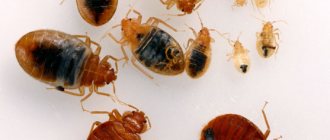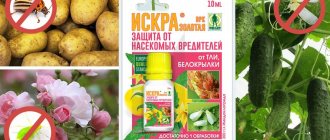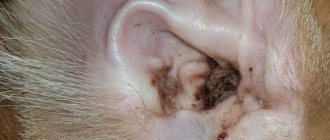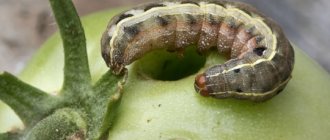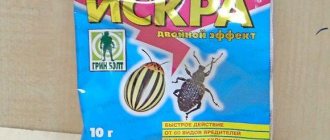A large number of different species of “little life” live in the forest biocenosis. The name “forest pests” can be called conditional, since insects, fungi and bacteria mainly attack old, diseased trees. However, massive damage to tree species also occurs due to the pathological reproduction of one or another type of pest. They are divided depending on which part of the plant they harm.
Forests are constantly attacked by various pests
What pests of needles and foliage are there?
In the forest this is the most numerous type of pathogen. They can often be seen on trees in their adult or larval stages. They feed on foliage, needles, partly buds and flowers. They are characterized by the occurrence of population outbreaks, which usually takes place over 7 generations and includes development, peak and attenuation. They can cause the greatest damage to the forest during the period of peak population outbreak. The main types of pests of needles and foliage include:
- butterflies;
- weavers;
- sawyers;
- leaf beetles;
- elephants;
- blisters.
Their pathological activity impairs plant nutrition and contributes to the partial or complete death of some branches and fruits.
Who are insects
Insects are a class of invertebrate arthropods that have chitinous bodies. They differ in structure, shape, size and lifestyle.
Life cycle.
All of them go through a life cycle with complete or incomplete transformation. The complete transformation cycle consists of 4 stages:
- egg;
- larva;
- chrysalis;
- adult (imago).
In an incomplete cycle, there is no pupal stage.
| Body structure | Three sections: head, chest and abdomen. Each segment has its own part. |
| Exoskeleton | The outer dense cover of the body and limbs is chitinous. There are growths, thorns, folds, hairs. |
| Colors | Diverse. They can be structural, bright, metallic, with patterns and stripes. |
| Head | With antennae, oral limbs, organs of vision. |
| Breast | It consists of three segments, the legs are attached to the knees and hip. |
| Wings | Two pairs, with a frame and thin fabric, are reinforced with veins. |
| Abdomen | Consists of a number of segments with appendages. |
Who destroys tree trunks
Forest stem pests are dangerous because they cause damage to the stem part of the plant. Penetrating into the bark of the plant and deeper, they make their passages there, deteriorating the quality of the wood and promoting the formation of rot and infection in the form of bacteria and fungi. Some parasites spend almost their entire life inside the tree trunk, eating it from the inside, while others periodically come to the surface and can be seen on the tree bark.
Tree trunks are most often affected
Damage to tree trunks is caused mainly by beetle-like species of insects; they affect weakened trees, but can also spread to healthy plants. The beetle is a pest of gardens and forests. This depends on the pollution of the forest zone, population outbreak, and the number of young animals in the planting. The main types of forest pest beetles include:
- bark beetles;
- goldfish;
- barbel;
- weevils;
- horntails;
- woodworms.
By introducing itself into the stem tissue of a plant, this type of parasite weakens the plant’s immune system, making it vulnerable to infections.
Stem pests
Wood pests belonging to this group are quite numerous: beetles, hymenoptera and butterflies. Forest trunk pests live and develop under the bark, damage the wood of the trunk and branches, and gnaw tunnels in the living layers. Such actions lead to complete drying out of trees or partial death (of branches and tops).
Forests affected by drought, flooding and fires are at risk, so the mass reproduction of pests directly depends on the viability and sanitary condition of plants, trees and plantings. Forest pests that attack trunks, as a rule, do not colonize healthy trees; they mainly attack weakened trees that are dying, freshly dead or old dead wood.
The fight against stem pests is carried out mainly by preventive measures: mixed crops are created, breeds are selected according to local climatic and soil conditions, which are more resistant to pests and diseases; compliance with the felling system and sanitary rules.
Today, the method of medicinal chemical means of controlling pests and diseases of trees using injections is already widely widespread.
Bark beetle typographer
Beetles mainly live on lying, diseased and weakened trees. During mass reproduction, healthy trees are also colonized. For additional nutrition, young beetles eat away at the bast of the tree. The bark beetle makes winding passages in the trunk. One generation of beetles develops over the course of a year.
Fluffy polygraph
A beetle from the bark beetle family most often inhabits isolated spruce trees with smooth, medium-thick bark; they settle densely along the entire length. Young beetles, pupae and larvae overwinter in the bark of trees. Depending on the climate zone, it develops in two to three generations per season.
Longhorn beetles
An extensive family of beetles: Tetropium beetles, black coniferous longhorned beetles;
Pests: oak, beech, hornbeam, walnut, less commonly linden.
Most species of longhorned beetles are oligophagous (they feed on plants close to each other); coniferous species infect some species, and deciduous species - others.
Additional food for young beetles is pollen from flowers, the succulent bark of young shoots, foliage or tree sap. To search for food they fly to plants. They are active at night.
Longhorned beetles usually settle in old trees with thick trunks; sometimes they choose oak stumps for housing.
Protection measures : To combat longhorned beetles, insectivorous birds, especially woodpeckers, are attracted to plantings.
Oak variegated longhorned beetles
They damage oak, hornbeam, pear, and less often chestnut, beech and other deciduous trees.
They colonize in harvested wood, logging residues and stumps. They prefer to live in sparse and well-lit plantings; They primarily settle in weakened and drying trees.
Control measures : sampling of green trees is used, monitoring the timely removal of harvested wood; Insecticides are used in areas of mass breeding.
What insects damage roots?
These insect pests of the forest chose this part of the woody plant for the reason that they lay eggs in the soil. By eating the root system, they impair the nutrition of the tree. This leads to thinning of wood tissue, leaves and branches turning yellow and dying, and weak fruits being formed that cannot produce viable offspring. This is one of the most dangerous types of parasites for forests and forest plantations. These insects include:
- wireworm;
- lamellar beetle;
- darkling beetles.
The wireworm lives in the ground and eats the roots
Pests of fields, gardens and vegetable gardens
This group includes many species of insects from different orders:
- locusts and mole crickets (orthoptera);
- Lepidoptera caterpillars;
- Diptera larvae;
- aphids and psyllids (homoptera);
- bedbugs (hemiptera);
- beetles (coleoptera);
- sawflies (hymenoptera).
Particularly harmful lepidoptera:
- the codling moth, whose caterpillar lives in apples;
- cutworms, whose caterpillars eat grain seedlings;
- silkworms, whose caterpillars completely eat the leaves, denuding the trees.
- click beetles, the larvae of which are called wireworms and gnaw the roots of plants;
- weevils that damage vegetables and garden trees;
- leaf beetles, which include the Colorado potato beetle and garden flea beetles.
Rice. 1. Insects are garden pests.
Who harms the fruits
These are forest pests that live off the ovaries, buds and fruits of the plant. By introducing themselves into the reproductive parts, insects eat them out completely from the inside or cause significant damage. Also, fruits and ovaries are eaten by insects that feed on leaves and needles, mice, squirrels and other small forest rodents.
Read on topic:
Features of the life activity of ladybugs
14.11.2020
Description of chironomids and their possible danger to humans
14.11.2020
What do cutworms look like and what harm do they cause?
14.11.2020
What do goliath beetles look like and can they be bred at home?
14.11.2020
Fruit pests are also known to be resistant to bacterial and viral infections due to their highly dispersed populations. These insects have little contact with each other. The main parasites of fruits include:
- codling moth;
- weevil;
- gall midge;
- blastophages;
- egg-eating riders;
- small forest rodents.
By eating fruits and ovaries, insects cause significant damage to the process of reproduction and the formation of a healthy gene pool of the forest.
Lifestyle of longhorned beetles
Already at the larval stage, snow beetles have the ability to destroy wood. To reproduce, beetles usually settle at heights. In houses, the best place for lumberjacks is under the roof.
Females use their powerful jaws to make holes in the wood for laying. Lumberjacks can lay more than 300 eggs.
Several weeks after the eggs are laid, the larvae appear. They can live for about 17 years. Over these years, the larvae can make forty-kilometer tunnels in the wood. They can double their weight in one day. The larvae pose a great danger, since they emerge from their shelters only after they turn into an adult beetle.
What pests are considered the most dangerous?
These include:
- aphid;
- silkworm;
- locusts;
- root pests.
One of the most dangerous types of pests that cause great harm is aphids. They are
dangerous because during the period of mass reproduction they can cause severe damage to the forest, up to its complete destruction. They quickly destroy the green parts of plants or undermine the roots. The recovery period after this may take several years.
What trees does the pest attack?
Under normal conditions, bark beetles live in:
- stumps;
- windbreak;
- old sick trees.
Nutrition
Feeding on the wood of obsolete trees, bark beetles clear forest areas.
The diet of the pest depends on the area in which it lives and the species to which it belongs. Most often, bark beetles are pests of coniferous forests. Some bark beetles live in the roots of plants, others in seeds and fruits.
The bark beetle feeds mainly on what is under the bark of the tree:
- bast – vascular-fibrous, lower part of the cortex;
- sapwood (sapwood) – actively growing layers of wood that contain many nutrients, minerals and liquid.
How to recognize mass infection
It occurs as a result of pathological reproduction of the pest population. Parasitic insects, fungi and bacteria always exist in the forest zone, however, they mainly inhabit only sick and old trees, serving as a kind of “orderlies” of the forest.
If pathogenic reproduction of pests is observed not only on weakened plants, but also on healthy trees and young trees, then this indicates the presence of mass damage by the pest. Certain measures must be taken to stop the outbreak.
This video will tell you in detail about different forest pests:
What damage do pests cause to trees and houses?
Only larvae and adult beetles pose a great danger to trees. They simply gnaw through the bark of trees, as a result of which the tree begins to hurt and dry out. they make their way into the bark of trees and can spread various fungi, due to which the tree begins to have an unnatural color, which leads to bad consequences.
Young animals prefer young animals. Beetles at a young age can damage 5-7 branches. Healthy trees begin to weaken, and pests give preference only to healthy crowns.
Large concentrations of pests can most often be found in places where there was fire, man-made consequences or pine forests. Pests do the same thing to houses. They also simply gnaw through the boards and make passages for themselves, thereby the boards begin to become infected and rot.
Pine can fight these beetles. She simply fills their passages with resin and thereby blocks their path, because after a certain time, the resin hardens. If you find entrances - funnels - in your house, then you should think about the fact that you may have uninvited guests.
How to control pests
Among the main types of control against tree parasites are:
- Carrying out sanitary and preventive measures. These include cleaning the area after cutting down trees. Using tree traps to catch pests and then burning them. Proper cutting of trees. Proper combination of various tree crops in the forest and selective breeding of species resistant to various parasites.
- Treatment with insecticides. This measure is used to treat forests during mass reproduction of the pathogen. Treating seeds, seedlings and soil against pests before planting. Using chemicals to combat them is an extreme measure, since not only the pathogen dies, but also other beneficial insects.
- Attracting insectivorous birds. Creating favorable conditions in the forest to attract birds that eat parasites to the forest. One representative of birds is capable of destroying up to several thousand insects per day; in addition, birds fertilize the forest soil with droppings.
- Breeding anthills. These insects prevent the proliferation of pathogens in the soil and inhibit the increase in the population of many pests of the roots of woody plants.
Description and appearance
Who the bark beetle is is known everywhere, since these pests live wherever trees grow.
More specifically, the bark beetle, a beetle from the vast family of weevils, looks like an unremarkable little dark bug. The size usually does not exceed 1 cm, however, in the tropics there are varieties up to 2.5 cm. The head seems to be lowered down. The antennae are geniculate and end in a club.
The limbs are flat, hairless, or covered with sparse reddish hairs. The body is protected by strong leathery elytra, under which there are developed wings with veins. Beetles are capable of flying over considerable distances.
Appearance
A female bark beetle can lay up to 80 eggs per season. The development cycle of beetles is very short: a new generation of pests appears within 50 days.
The bark beetle larva, sometimes incorrectly called a caterpillar, can cause more damage to a tree than an adult insect due to its gluttony.
The larva has a thick segmented body of almost white color, 1-1.5 cm long. The head is small, hard, yellow or brown, with powerful jaws-mandibles. The larvae grind wood fibers with their jaws, moving along the passages with the help of callous pads on the body.
How to protect our forests
The life and spread of forest pests is controlled by the forest protection service and forest pathologists. They monitor forests, identify cases of uncontrolled reproduction of dangerous insects and take measures to prevent their further spread. Pest elimination is carried out in the following ways:
the use of biological control methods (attracting natural enemies of insects: birds, insectivorous mammals, viruses and pathogenic bacteria); chemical treatment; mechanical method (killing insects manually, installing traps); physical method (using ultrasound, electric current, etc.)
Most often, these methods are used in combination, which allows for the most effective pest control.
Forest pests and ways to combat them
Every living thing can get sick, and trees are no exception. Their health can be compromised for a variety of reasons, not the least of which is a variety of pests. Sometimes they attack an already weakened tree, sometimes they choose a completely healthy one. Worst of all, pests easily attack one tree after another, and it is not always possible to detect an infestation in time. How to check the condition of each tree in a huge forest? Very often the disease is detected when a significant area has already been affected.
How does mass infection occur and how to determine it?
In order for mass infection to begin, several factors most often need to coincide. Firstly, without pests there will be no infection. Some of them must be present in the forest. These can be a variety of butterflies and beetles, as well as fly larvae, caterpillars and many other tiny animals. The second necessary condition is a favorable situation for the active uncontrolled reproduction of pests. Good weather, a lack or complete absence of natural enemies, the presence of a large amount of food and some other factors will certainly provoke a massive infestation of forests by pests.
So, the existence of favorable conditions is essentially the first stage of infection. Then, once in a favorable environment, the pests actively reproduce. This is the second stage of mass infection. There are more and more of them. On average, this period can last up to three years.
When the pests become really numerous, the second period begins, accompanied by severe damage to the forest. It represents an outbreak of infection as such. This state of affairs rarely lasts longer than two years. In the end, an excessive number of pests leads to the fact that they do not have enough food, diseases are spread among them, and more and more predators appear, whose natural prey they are. This period also lasts about a year or two.
To determine whether a forest area is experiencing massive pest damage, special criteria are used, both qualitative and quantitative.
The list of qualitative evaluation criteria is as follows:
- It is necessary to determine how prolific the pests are.
- It is necessary to determine what the sex ratio is among them.
- It is necessary to determine whether natural enemies of pests are present, whether pests are affected by parasites, and whether diseases are common among them.
- It is necessary to determine what the pests look like - how they are colored, what their size is, and so on.
As for the quantitative criteria, they are as follows:
- The degree of infestation, also known as absolute infestation, is the number of pests in an area equal to one tree or one square meter of soil.
- The reproduction rate is determined by comparing the number of pests in different periods, for example, last year and the year before. To find out, you need to calculate what the ratio of the more recent degree of population to the older one is.
- The outbreak growth rate is intended to show how quickly the danger is growing. To determine it, a certain period before the outbreak is compared with the period after it. When calculating the growth rate of an outbreak, one should calculate the ratio of the degree of population during the period during the outbreak to the degree of population in the period before it.
Forest pests in faces
Animals that can safely be called forest pests are numerous, and this article will consider only some of the species that parasitize such a widespread tree species as pine.
The pine cutworm is an inconspicuous-looking butterfly, brown with white spots, but its caterpillars are elegant - dark green, with snow-white longitudinal stripes. The females lay eggs on the branches, from which caterpillars emerge, diligently gnawing first the young ones, and then all the needles. This can destroy the tree or weaken it. In the latter case, it may be attacked by other pests, for example, longhorned beetles. Natural enemies of pine cutworms are birds that feed on caterpillars.
There are many types of longhorned beetles. Let's take black pine as an example. These are rather elegant black beetles with very long antennae that devour the bark of branches and occasionally pine needles. To lay eggs, they prefer to choose trees that have been weakened in some way. The larvae, once born, are, as a rule, quite capable of finishing them off.
Parasites feed not only on wood, bark and pine needles. For example, a round beetle called the pine cone gumbo lays its eggs directly into the pine cones. The development of larvae subsequently prevents the cones from developing normally.
The blue borer, a beautiful dark blue beetle with a tint of black or green, also infects pine trees, preferring weakened ones, and lays its eggs in cracks in the bark. The four-spot borer, a pleasant-looking brownish-golden bug, behaves in exactly the same way.
The pine silkworm, a butterfly with wings painted in several shades of brown, is also not at all harmless. They choose areas of the forest that are as dry as possible and, when the breeding season begins, lay many eggs. Fluffy brown caterpillars rise to the tops of pine trees, where they begin to actively eat needles, mostly old ones. For the winter they go down to the protection of roots, moss and fallen needles, only to crawl out into the light again in the spring. After wintering they become especially voracious. They like both old and young needles, shoots, buds, and young bark. The more caterpillars there are, the higher the competition, and the more indiscriminate they are in eating. By summer, the surviving caterpillars grow up and continue to actively eat trees in order to then weave a cocoon. Cocoons literally cling to trees and then give life to butterflies. In nature, the enemies of these animals are hedgehogs and other small predators that eat wintering caterpillars, as well as various birds whose natural food is insects. In addition, some flies parasitize silkworm eggs, and fungal diseases often destroy caterpillars.
Another dangerous butterfly is the white-brown pine moth. They lay their eggs closer to the old pine needles, and then the green caterpillars with white stripes on their sides that are born begin to actively gnaw it. Usually relatively young trees become victims, but sometimes this also happens to older ones. The natural enemies of these butterflies are many birds, as well as a number of parasites and some fungi and bacteria that cause diseases.
How to fight forest pests?
Nowadays, there are several methods of pest control, and each of them is necessary in its own way.
To prevent mass infections, there is a forestry method. It consists of carrying out a number of preventive measures that are highly likely to prevent infection. If the seedlings are healthy, the ecological situation is stable, and monitoring is constant, it will be more difficult for pests to infest the area.
The physical and mechanical method of control consists in the timely destruction of pests using, so to speak, brute force. A good example is harvesting pitch-infected pine cones before the larvae develop into beetles.
The biological control method requires a competent approach, but the difficulties are often worth it. It allows you to force nature itself to fight pests. For example, natural enemies of a particular pest are taken and they are given the opportunity to hunt properly. Of course, ideally, these natural enemies should already live on the site, but the population may be insufficient or even absent. If there are a sufficient number of such animals, they should be protected as much as possible so as not to encounter mass infection due to the lack of predators. You can also purposefully infect pests with various diseases, for example, the marsupial fungus can destroy most of the population of nun silkworm caterpillars.
The most dangerous and radical method of pest control is chemical. It should be resorted to only in extreme cases, when the infection is so great that other methods no longer help. The affected areas are treated with pest-killing substances. Unfortunately, they, as a rule, kill not only pests and have an extremely bad effect on the environmental situation.
bumblebees
Bumblebees belong to the same family as bees. However, they are less aggressive and do not react to the presence of a person near their home. Insects fly low enough that you may not notice them in tall grass. However, it is worth considering that bumblebee venom is no less dangerous than bee venom. So, if you are bitten by a bumblebee, you should behave in the same way as if you were stung by a bee.

